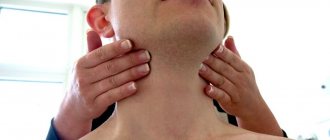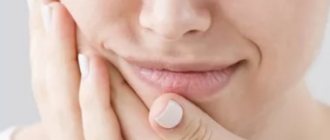The most common form of jaw injury is a bruise. No one is immune from this. For example, with a strong blow to the jaw, soft tissues, blood vessels, and capillaries are affected, resulting in the formation of hematomas and swelling. This is accompanied by severe pain and discomfort.
To avoid complications, it is recommended to consult a doctor immediately after injury. The fact is that impaired jaw function entails a chain of negative consequences: difficulties while eating, deterioration in the quality of spoken speech, etc.
Symptoms of manifestation
Bruises on the face are difficult to ignore. It is characterized by knowledge of all standard symptoms, such as:
- Painful sensations in the facial area. And they are usually felt strongly because the ends of the facial nerves are among the most sensitive;
- Tissue swelling. This manifests itself as swelling of the skin, which may appear thickened upon palpation. The severity of edema depends not only on the severity of the injury, but also on the thickness of the skin and the internal structure of the tissues. Therefore, the area around the mouth and face is most susceptible to swelling;
- Bruises, bruises and hematomas. They arise as a result of damage to blood vessels and the accumulation of platelets in the damaged area. It’s worth saying right away that the deeper they are under the skin, the later the reaction will appear, but, unfortunately, the longer it will take. For this reason, many people start using ointments and gels for bruises even before visible signs appear;
- Feeling numb. This occurs in cases where the fibers of the facial nerve were directly affected during the injury. If nerve damage is very severe, there is a risk that reduced nerve activity may persist;
- Disruption of various areas of the face. Examples include: inability to see if the eye is swollen, difficulty breathing if the nose is injured, difficulty chewing food if the jaw is injured;
- Open bleeding. Observed when the skin is damaged at the site of the bruise and there is an open wound or deep scratch;
- Nausea, vomiting, loss of consciousness, convulsions. Such serious symptoms can occur if a bruise of the soft tissues of the face is accompanied by a traumatic brain injury and, as a consequence, impaired brain function.
Bruises and bruises are symptoms of contusion of the soft tissues of the face.
Of course, each of these symptoms may vary in severity in each individual case. Much depends on the individual characteristics of the body, such as the thickness of the skin or the elasticity of blood vessels. So, with one type of injury, one person may only have swelling, while another may have a severe hematoma.
First aid
First aid is recommended for injuries to the soft tissues of the face, regardless of the force of the blow. Here are three basic steps in this situation:
- Place something cold on the bruised area. This could be ice, snow, a compress soaked in cold water, or even a chilled metal spoon. Cold helps constrict blood vessels, reducing the risk of bruising under the skin. However, there are two things to keep in mind. Firstly, facial skin is quite thin and cannot be exposed to prolonged exposure. The optimal time is 15-20 minutes. The procedure can be repeated after 2 hours. Use material that protects the receptors from hypothermia. The second point is that the effectiveness of this method is available only in the first half hour after injury;
- If there are signs of skin trauma, be it wounds or abrasions, it is important to treat them with antiseptics. The most common of them are the well-known hydrogen peroxide, herbs, and a very weak solution of manganese solution. This must be done very carefully, since every touch to the wound can cause pain to the victim;
- Anesthesia. If the sensations are strong, you should turn to painkillers. Among them are Ketone, Ketorol, Ibuprofen. Before use, be sure to read the instructions.
First aid for bruised soft tissues of the face includes applying ice.
In most cases, the listed first aid measures for bruises are sufficient. However, if the injury is much more serious and the victim experiences heavy bleeding or convulsions, then the first step is to call an ambulance. When traveling, control bleeding with a tourniquet or position the person so that they do not risk swallowing their tongue.
It is important to remember that the method of providing first aid will affect the result of further treatment of facial bruises and the likelihood of developing complications.
Diagnostics
A bruise is easy to diagnose, but only doctors can determine its severity and possible complications. Therefore, if for any reason the injured area is bothering you, it is better not to waste time and seek professional help. The diagnosis can be made:
- inspection;
- palpation;
- Assessment of symptoms and complaints;
- In some cases, an ultrasound or x-ray examination may be required.
Diagnosis consists of determining not only the presence of a bruise, but also its severity. There are four degrees:
- First degree. This is the easiest and least dangerous option, involving a slight change in the structure of the subcutaneous tissue. There is no bleeding or hematoma, but blue skin discoloration is quite possible. For the first degree of injury, visiting a doctor is usually not required. It is quite possible to limit yourself to home remedies, which, with the right approach, will help eliminate symptoms in 5-7 days;
- Second step. In this case, significant damage to the subcutaneous and muscle tissue occurs. Severe swelling, pain and even hematoma may appear. It is better to treat such a bruise with medications together with physiotherapeutic procedures;
- Third degree. It damages not only muscle tissue, but also tendons. In some cases, the integrity of the skin may be compromised. Since there is a risk of developing an infectious process, examination by a doctor is mandatory.
- Fourth degree. This is the most severe and dangerous degree of injury. It is always accompanied by injuries not only to soft tissue, but also to bone tissue. In this case, there is a high risk of developing various types of complications. It is imperative to seek qualified medical help.
Accordingly, the type of treatment will directly depend on the degree and nature of the bruise.
Consequences of fights and falls - concussion
We will try to answer this question in this not very long article!
There are few people in the world who have not heard anything about concussions. Most, both men and women, can talk about situations in which they have been and received various types of injuries. In some cases there were concussions, and maybe someone was on the verge of it. But no one can give a clear answer. They usually say that there was a severe headache and dizziness, but “I” did not turn anywhere.
Let's get creative! Imagine a decent-sized egg - it will be a human head, where the skull replaces the shell, the brain is the yolk inside, and the white is cerebrospinal fluid. Introduced? Now let’s shake the egg or hit it. The yolk floating inside collides with the shell, and each touch leaves marks on the yolk.
The same thing happens with the human brain (usually everyone has one!). He is very gentle and fragile. Any contact of the brain with the skull leads to a change in the shape of brain cells or a so-called concussion. The condition of a concussion is not a pleasant one. There are cockroaches rushing somewhere in my head all the time! But this is much better than if, upon impact, the integrity of the skull was not preserved.
The consequences of such injuries can be different. For example, loss of connection. This can occur selectively between any brain cells, and maybe between entire departments. There is poor interaction between the trunk and its identical opposite hemispheres.
Some symptoms of a concussion
Such symptoms include an increase in the size of the eye pupils, vomiting, even slight memory loss, partial or complete loss of taste and impaired sense of smell. But a head concussion does not always cause these symptoms, and if something bad happened to you, after which you have been dizzy for several days or have signs of a headache, contact the clinic. See a neurologist to examine your skull.
Concussion
Most concussions occur due to some kind of blow. And blows reach our heads in different ways and usually cause swelling and minor hemorrhages. These can, of course, include reckless fights, serious falls with injuries and, of course, accidents. A concussion occurs only due to a strong blow (the direction does not matter) to the head, because the brain must be displaced in such a way that a collision with the skull occurs. A weak impact does not cause a concussion.
After such a strong blow, damage occurs and sometimes even destroys some of the nerve cells that are responsible in the body for the passage of impulses to the brain. There comes disorder in their work, you can call it a neural storm in the brain. It is cellular rabies that leads to significant loss of vision and loss of memory (full or partial), vomiting and nausea, headaches, etc.
The brain heals us!
It's good that our amazing brain itself is engaged in our treatment. He voluntarily begins the process of pacifying rebellious neurons by increasing glucose production. After all, with the help of glucose, blood vessels contract, and this means the work of the brain slows down. And the restoration process will end only when everything returns to its normal appearance.
Self-medication usually takes several weeks. The only requirement: do not receive new concussions or negative impacts during this period. Otherwise, new damage may not be reversible and will lead you to dementia. The main medicine in this situation is peace and only peace!
Lie down and rest in silence, preferably without TV.
So as not to disturb the nerve cells. If you notice similar symptoms, consult a doctor, as rest alone may not be enough! You may need treatment with medications, because the head is not to be trifled with! Take care of your health! Author: K.M.N., Academician of the Russian Academy of Medical Sciences M.A. Bobyr
Treatment
Treatment methods for bruises can be divided into two large groups: traditional in the form of drugs and treatment methods, and non-traditional in the form of traditional medicine. Ideally, you can combine techniques from both groups. This solution will help you get rid of bruises in less time.
Medication
If the situation does not require hospitalization, the bruise is treated using standard methods. Namely:
- Preparations for external use: gels, ointments, creams;
- Physiotherapeutic procedures. These include electrophoresis, heating, laser therapy. All these procedures are aimed at eliminating subcutaneous clots and stimulating skin regeneration.
Creams, ointments, and other treatments for bruises are widely available.
In every pharmacy you can find a huge selection of such products. But when choosing, it is important to pay attention to the composition, influence and age restrictions. Not all products are suitable for children.
With regular and correct use of the ointment, you can get rid of bruises and swelling within a few days. And if you supplement your treatment with physical therapy, you can expect results even faster.
Traditional methods
Bruises and bruises can also be treated with traditional medicine. The only rule is that you can start using them a few days after the injury.
Among the folk recipes for bruises and bruises on the face it is worth mentioning:
- Cabbage leaf or raw potato. They should be applied to the damaged area. Thanks to this, swelling quickly decreases;
- Honey. Has a good laxative and anti-inflammatory effect. You can even not limit yourself to the area of the bruise, but apply honey all over your face, creating the appearance of a mask;
- Camphor oil. To obtain the effect, it must be applied with light rubbing movements;
- Compresses. It is best to cook them with onions or salt;
- Alcohol-based compresses. In this case, the rosemary plant can be the basis. Has a warming and antiseptic effect;
- Arnica decoction. This measure is applied not externally, but internally. It not only strengthens the immune system, but also stimulates regenerative processes.
Applications with honey are a folk method for treating bruises of the soft tissues of the face.
And, of course, one should not underestimate the influence of standard massage measures in the form of light stroking and rubbing.
How can you disguise a black eye?
If you don’t want to bother with folk remedies and there is no way to buy ointment, and the bruise is not so strong that you need to waste time on it, such an injury can simply be disguised .
Media personalities and people who can pay for it in beauty salons use the services of professional make-up artists using professional products.
But at home it’s easier to use regular cosmetics.
best suited for these purposes .
It is better to use a product of a certain shade , depending on the color of the bruise.
Note! If it is fresh and has a red tint, the concealer should also be red. As you move towards purple, it is better to use an orange pencil.
In general, you can use any suitable concealer, and for testing, you can apply a small amount of the product to the back of your wrist - the skin here is approximately the same color as on your face, and this allows you to evaluate the future result.
But it is less preferable to apply powder and foundation . Such products cover up bruises well, but at the same time the face takes on an unnatural shade.
Consequences
Complications with bruises are quite possible. It all depends on the nature of the injury and which area of the face was damaged. Possible consequences include:
- Nerve damage. completion. This is quite dangerous, since it is not always possible to fully restore their functionality. This means that the affected part of the face may stop moving;
- Deterioration of vision. If the area around the eyes is bruised, there is also the possibility of damage to the nerve responsible for visual functions. Again, the outcome depends on the nature of the injuries. Both partial and complete loss of vision is possible, which is much less common;
- suppuration at the site of the bruise in the form of an abscess;
- bleeding that, if not treated immediately, may lead to fainting or shock;
- Cyst formation in the presence of hematomas.
In case of serious injuries, the bruise may be accompanied by a concussion, deformation of the bones of the nose or jaw. As a result, a person may later suffer from conditions such as sinusitis or sinusitis.
How long does it take for a bruise under the eye to last?
How long does it take? If after the blow you do not provide first aid and subsequently do not engage in treatment, a moderate or severe hematoma will disappear within a maximum of two weeks (plus or minus two to three days, taking into account individual physiological characteristics).
The speed of bruise resorption also depends on the time of year .
In hot weather, bruises take longer to heal. If a person immediately takes action and then treats the injury site with special ointments, the healing process takes from several days to a week .
Occasional mild hematomas, regardless of whether medications were used or not, usually resolve within three days.
Prevention
Almost all of us have had bruises on the soft tissues of our faces in our lives. Unfortunately, this cannot be completely prevented. However, in order to at least minimize the risk, it is necessary to take basic precautions and safety measures. When it comes to children, it is important to teach them from an early age how to avoid traumatic situations.
If facial bruises do occur, do not leave it unattended and take appropriate measures. You can do this yourself or seek medical help.









